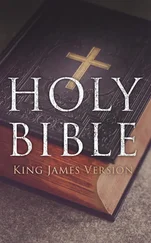R. Jehoshua, ben Levi said, that hell has seven names, viz.: Sheol, Abadon, Baar Shachath, Bor Sheon, Tit Hayavon, Tzalmoveth, and Eretz Hathachthith. 1
Where is the gate of Paradise? Said Resh Lakish: "If the gate of Paradise is in the land of Israel it is in the city of Beth Sheon. If it is in Araby it is in the city of Beth Gerem, and if it is between the rivers it is in Damaskanun."
In Babylon, Abayi would praise the fruit growing on the other side of the Euphrates and Rabha would praise the fruit of the city of Harphania (so it may be that the gate of Paradise is situated in one of these two places).
" Cattle yoked together in a team, but not walking unyoked ." Why does the Mishna say "yoked together but not unyoked"? It is self-evident, that if they must be yoked they cannot be unyoked? We might assume, that if it said only "yoked together" we might think that apparently yoked would be sufficient, so it is repeated in order to make it more emphatic.
" So that one enters as the other passes out ." That means, that one team can enter while another passes out. This was taught in a Boraitha.
The Rabbis taught: How much (in size) must the larger part of a cow be reckoned? Two ells. What is the breadth of a cow? One and two-thirds of an ell. Thus six cows abreast will measure about ten ells. So said R. Meir, but R. Jehudah said: "About thirteen or fourteen ells." Why does R. Meir say "about ten ells"? It is exactly ten ells? Because he must teach later "about thirteen ells," so he also approximates it in this case, and says "about ten ells." Now, why does R. Jehudah say "about thirteen ells"? According to his opinion it should be more? Because he wishes to say "about fourteen" he generalizes it and says "about thirteen or fourteen." How can he say about fourteen? It is less than fourteen? Said R. Papa: "He means to say more than thirteen and less than fourteen" ( i.e. , the measure of two teams of four cows each abreast is more than thirteen and less than fourteen ells),
R. Papa said: For a well that measures not more than eight ells in circumference, all agree, that no centre-boards are necessary. For a well of twelve ells in circumference, all agree that they are necessary. Where they differ is concerning a well that is between eight and twelve ells in circumference. According to R. Meir centre-boards are necessary, and according to R. Jehudah they are not. What would R. Papa inform us? We have learned this in our Mishna; for R. Jehudah says two teams of four animals each and R. Meir two teams of three each, so the difference is the size of two animals but not the size of one. R. Papa did not know of the Boraitha stating the size of a cow, so he came to teach us the measure.
Abayi asked Rabba: "What is the law if a man make the enclosures wider; must, according to R. Meir, centre-boards be put up nevertheless or not?" and Rabba answered: "This was taught us in the Mishna, 'providing that more boards be used.' Can we not assume that centre-boards are necessary?" Rejoined Abayi: "Nay! it may mean that the corner-boards should be increased in length." It seems to us that the opinion of the latter is the intention of the Mishna. This decides the argument.
Abayi asked Rabba again: "What is the law according to R. Jehudah if the space between the corner-boards on the same side exceeded thirteen and one-third ells? What should a man do then? Should he increase the length of the corner-boards or put up centre-boards?" Answered Rabba: This was taught us in a Boraitha as follows: What is meant by "they are near each other"? If they are only apart a space as large as the greater part of a cow. What would be called "they are far away from each other"? If the space between them is so large that a kur or even two kurs of grain can be planted therein. R. Jehudah, however, said, that only a space large enough to permit of the planting of two saahs of grain is permitted, but no more. The sages said to R. Jehudah: "Dost thou not admit that a cattle-pen or a fold, a bleaching-ground or a courtyard, even though they be large enough to accommodate five or even ten kurs of grain, are permitted?" R. Jehudah answered: "Here the case is different; for here we have partitions, while in the case of a well we have only enclosures." Now, if the length of the corner-boards should be increased, then R. Jehudah would say that the boards around a well also constitute a partition. Rejoined Abayi: Around a cattle-pen or a fold, a bleaching-ground or a courtyard, according to R. Jehudah, the law of a partition is applied and that must not contain a space larger than ten ells, and it matters not whether that space have a capacity large enough to permit of planting one or five kur of grain; but the space between the corner-boards was fixed at thirteen and one-third ells because the law of enclosures is applied, hence it should not have a capacity larger than would permit of the planting of two saahs of grain, even if the length of the boards be increased.
Abayi asked Rabba again: "Can a sandheap four ells wide and sloping up to a height of ten spans take the place of the corner-boards at a well?" Answered Rabba: "This is taught in a Tosephta: 'R. Simeon ben Elazar said: If there was a square rock standing at the corner of a well, which if divided would form an angle, each side of which would be one ell, it may take the place of corner-boards, otherwise it cannot.'" R. Ishmael the son of R. Johanan ben Berokah said: "Even if the rock was round and when made square and divided would form an angle each side of which would be one ell, it may also take the place of the corner-boards." On what point do they differ? According to the former Tana there is only one supposition allowed regarding the rock, whereas according to the latter, even two suppositions concerning the rock are permitted.
He asked him again: "May a bush take the place of corner-boards?" and Rabba answered: "We have learned this in a Boraitha: If there was a fence, a tree, or a number of cane-laths on the spot, they may serve as corner-boards." What is meant by cane-laths? In all probability a bush. Nay; we might assume, that they were really cane-laths and less than three spans apart? Then, by application of the law of "lavud" it would be a fence, and the Boraitha mentions a fence in the first place; why should the repetition be made? If it is a bush, it is the same as a tree; why the repetition in this instance? It might be said, then, that two kinds of a tree are mentioned; why should not two kinds of fences be mentioned?
Abayi asked him again: May things be carried from a courtyard opening into the enclosure around a well and vice versa ? Rabba answered: "They may." "How is it if there were two adjoining courtyards opening into the enclosure?" "Then one must not carry from the courtyards into the enclosure." Said R. Huna: "If there were two courtyards, even an Erub will not make it lawful to carry things from the courtyards into the enclosure as a precaution, lest it be said, that the law of Erub applies also to enclosures." Rabha, however, said: "If an Erub was made, it is lawful." Said Abayi: "I know of a Boraitha, which supporteth thy opinion, viz.: If a courtyard opened into an enclosure around a well, things may be carried to and from the courtyard and the enclosure, but if two courtyards opened into the enclosure, this is not allowed, provided an Erub was not made. If an Erub was made, it is lawful."
Abayi asked Rabba again: "What is the law concerning the enclosures of a well which had gone dry on Sabbath?" and he answered: "Were not the enclosures made merely for the sake of the water? If the water gave out, the enclosures are void." Now asked Rabin of Abayi: "What is the law if the well went dry on the Sabbath and was filled again on the same day?" Answered Abayi: Concerning the law of a well that had gone dry I asked Master and he told me that the enclosures were void; hence if the well filled up again on the same day the enclosure must be regarded as one constructed on the Sabbath and it was decided that [in Tract Sabbath, page 200] a partition constructed on the Sabbath is valid.
Читать дальше












